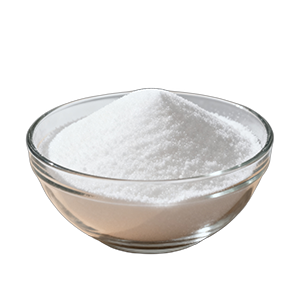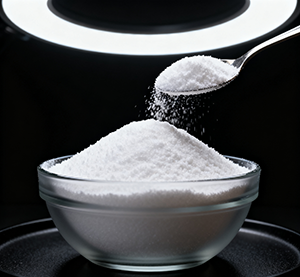HMOs
1. Infants and young children: replicating the "first protection" of breast milk
Neonatal intestinal "colonization protection"
"Special protection" for premature babies
2. Adults: New solutions to "modern health pain points"
Gut health "precise regulation"
Immunity "active defense"
Brain Health "Gentle Support"
3. Special populations: "auxiliary interventions" in medical scenarios
Diabetics are "blood sugar friendly"
Allergy people "inflammatory regulation"
Product Introduction
When it comes to the "magical power" of breast milk, most people think of basic nutrients such as protein and fat, but few people know about human milk oligosaccharides (HMOs), the "invisible guardians". As the unique active carbohydrates in breast milk, HMOs do not directly provide energy, but they have become a key link between breast milk nutrition and human health with the characteristics of "precise regulation of physiological functions". Today, with the breakthrough of biosynthesis technology, HMOs have gone beyond breast milk and achieved innovative applications in infant feeding, adult health management, special medical care and other scenarios, redefining the boundaries of "precision nutrition".
1. Re-understanding HMOs: More than just the scientific value of "breast milk ingredients"
The uniqueness of HMOs stems from their scientific logic of "structure determines function" and technological breakthroughs from natural breast milk to commercial applications, which together constitute their irreplaceable value base.
1. The "functional code" in natural breast milk
In human breast milk, the presence of HMOs is not accidental, but a "protective mechanism" formed over time by evolution:
Dynamically changing "nutritional adaptation": the content of HMOs is highest (up to 22g/L) in the colostrum stage (1-5 days postpartum), when the intestinal mucosa of the newborn is not fully developed and the immunity is weak, and the high concentration of HMOs can quickly build an intestinal protective barrier; As lactation progresses, the content of HMOs gradually decreases to 4-6g/L, but its structure adjusts with the baby's growth needs - for example, after 6 months, the proportion of sialylated HMOs (such as 3'-SL) increases to meet the baby's brain development demand for sialic acid.
"Precise protection" of individual differences: There are differences in the composition of HMOs secreted by different mothers, which are directly related to maternal genotype. For example, mothers carrying the fucotransferase gene have higher levels of 2'-fucosyllactose (2'-FL) in their breast milk, which can help their babies better resist rotavirus infection, while mothers who have had a cesarean section have slightly higher levels of anti-inflammatory-related HMOs (such as LNnT) than mothers who have given birth vaginally to cope with the risk of imbalance in the gut microbiota that babies may face by cesarean section.
2. Commercial breakthrough: Make "breast milk-grade nutrition" accessible
The extraction cost of HMOs from natural breast milk is extremely high (only a few milligrams can be extracted from 1 liter of breast milk), which cannot meet the needs of large-scale applications, and the maturity of biosynthesis technology has changed HMOs from a "scarce resource" to "inclusive nutrition":
"Precise replication" of microbial fermentation: Using Escherichia coli and yeast as "cell factories", the enzyme genes required for the synthesis of HMOs are introduced through gene editing technology, so that they can use lactose and glucose as raw materials to synthesize HMOs with specific structures. For example, when producing 2'-FL, engineers precisely control the fermentation temperature (37°C), pH (6.0), and oxygen concentration to ensure that the product structure is exactly the same as that of 2'-FL in natural breast milk, with a purity of over 95%.
Stringent "safety certification": Commercial HMOs are subject to multi-dimensional safety verification, including "structural consistency testing" (using high performance liquid chromatography-mass spectrometry technology to confirm no structural differences from natural HMOs), "toxicological evaluation" (proven no adverse reactions after long-term ingestion through animal and human clinical trials), and "microbiological safety testing" (ensuring that the product is free of pathogens and antibiotic residues). At present, more than 10 HMOs around the world have passed the GRAS certification of the US FDA and the safety assessment of the EU EFSA, and China has also included 2'-FL and LNnT in the list of compliant raw materials for infant formula food.
3. "Scene Adaptation" of Physical and Chemical Properties
HMOs can be used in multiple scenarios, which is inseparable from their "stable and flexible" physical and chemical characteristics:
Processing resistance "Industrial Friendliness": HMOs can withstand pasteurization at 85-95°C (lasting 15-30 seconds) during the production of infant formula, and can maintain stability for more than 18 months during milk powder storage (room temperature, sealing) without degradation due to temperature fluctuations or humidity changes; After dissolution, the HMOs solution is neutral and does not interact with proteins, vitamins and other ingredients, and does not affect the taste or color of the product.
"Universality" tolerated by the body: As "indigestible carbohydrates", HMOs can function intact through the stomach and small intestine directly to the large intestine, neither being absorbed by the small intestine to cause an increase in blood sugar (suitable for diabetics) nor gas production due to digestion (HMOs have a higher threshold for bloating than fructooligosaccharides, and adults still have no significant discomfort after consuming 20g per day).
Application of the product
Today's HMOs are no longer simple "additives", but "function as the core", integrating different product forms to form a full-scenario solution covering "eating, protecting and nurturing", making health protection more convenient and more in line with needs.
1. Infant feeding: from "formula" to "full-cycle nutrition"
In the infant and toddler sector, HMOs have extended from a single formula to products with a full feeding cycle:
"High-end upgrade" of formula milk powder: Mainstream milk powder brands have taken HMOs as the core selling point of the "high-end line", such as the "dual HMOs formula" (2'-FL+LNnT) launched by an international brand, claiming to "simulate 98% of the intestinal protection function of breast milk", and quickly occupied 30% of the high-end milk powder market after listing; Some brands also offer "high HMOs content formulas" (2.0g/L additive) for premature infants to meet the special nutritional needs of premature babies.
Complementary food "functional innovation": For infants over 6 months of age who are supplemented with complementary foods, rice flour and fruit puree products containing HMOs appear on the market. For example, a domestic complementary food brand launched "HMOs + Probiotic Rice Noodles", which combines 2'-FL with Bifidobacterium lactis BB-12, which not only solves the problem of intestinal adaptation during the addition period of infant complementary foods, but also strengthens immunity; The puree product supports infant brain development while supplementing vitamins by adding sialylated HMOs (6'-SL).
Feeding supplements "Precise fit": HMOs drops are the new choice for families with insufficient or mixed feeding. These products are based on high-purity 2'-FL (containing 10mg of HMOs per drop) and can be dropped directly into breast milk, milk powder or complementary foods, allowing parents to adjust the dosage according to the baby's needs – for example, 5-8 drops per day for premature infants can replenish enough HMOs without the need for additional milk powder changes.
2. Adult health: from "health products" to "daily consumption"
HMOs products in the adult market are penetrating from "professional health products" to "daily food", lowering the consumption threshold:
Solid drinks "convenient supplement": For office people, the brand has launched HMOs solid drinks, each bag contains 5g of HMOs, with inulin, vitamin C and other ingredients, and can be drunk with warm water. This type of product focuses on "afternoon tea health replacement", which not only relieves fatigue, but also regulates the intestines, and has become a "must-have for overtime" for white-collar workers after being launched.
Snack "functional upgrade": Healthy snack brands integrate HMOs into biscuits, nut bars and other products, such as the "low GI HMOs biscuits" launched by a brand, based on whole wheat flour, with 2'-FL and erythritol, which not only meets the taste needs but also does not cause blood sugar fluctuations, and is suitable for diabetics and weight loss people.
Oral Formulations "Precision Interventions": Oral formulations (capsules, tablets) of HMOs have emerged for specific health problems. For example, the "2'-FL + Probiotic Capsules" for patients with irritable bowel syndrome, each containing 2g of HMOs and 10 billion CFU of live bacteria, can synergistically improve gut microbiota; "Compound HMOs Tablets" for the elderly, compounded with ingredients such as 3'-SL, vitamin D, etc., while supporting immunity and bone health.
3. Maternal and Child Care: From "Topical Care" to "Mucosal Protection"
The antibacterial properties of HMOs have made them achieve breakthroughs in the field of maternal and infant external care, forming a "internal and external synergy" protection system:
Infant skin care "mild antibacterial": Traditional infant skin care products mostly rely on chemical preservatives, while buttock creams and wipes containing HMOs reduce the risk of red buttocks and skin infections through "physical antibacterial" methods (HMOs bind to pathogenic bacteria to prevent them from attaching to the skin). For example, a brand of buttock balm with 2'-FL and natural oils, with a pH value consistent with baby skin (5.5), fragrance-free, and alcohol-free, suitable for babies with sensitive skin.
Oral care "prevention first": Infants and young children's oral mucosa is delicate and susceptible to caries-causing bacteria, and oral cleaning solutions containing HMOs can prevent early caries by inhibiting the colonization of Streptococcus mutans (the main caries-causing bacteria). Most of these products are fluoride-free formulas that can be sprayed directly into the baby's mouth or used to clean the gums, solving the problem of "difficult brushing for babies".
Maternity care "postpartum repair": Postpartum care sprays containing HMOs can shorten wound healing time by promoting wound mucosal repair, inhibiting the growth of Staphylococcus aureus, and shortening wound healing time after postpartum wounds (such as perineal lateral incision wounds). Clinical data show that women who use nursing sprays containing HMOs have 2-3 days shorter wound healing time and a 20% reduction in infection rates compared to usual care.
How to put HMOs into perspective
Although HMOs have broad application prospects, there are still many misunderstandings among consumers when choosing, and clarifying these cognitive biases can make HMOs truly exert their health value.
1. Myth 1: "The higher the HMOs content, the better"
In fact, the effects of HMOs are related to "dose fitting" rather than "higher levels are better":
In infant formula, the amount of HMOs added must meet the national standard (2'-FL dosage ≤2.0g/L stipulated in China), and excessive addition may lead to imbalance of intestinal flora in infants and young children.
The recommended daily intake of HMOs for adults is 5-15g, and more than 20g may cause mild bloating (due to increased metabolism of the gut microbiota), but symptoms will resolve quickly when intake is stopped.
2. Myth 2: "All HMOs function the same"
There are differences in the functions of HMOs of different structures, and the selection needs to be based on the needs:
Improve intestinal flora, resist rotavirus, prefer 2'-FL;
promote brain development, supplement sialic acid, and give preference to 3'-SL, 6'-SL;
Anti-inflammatory, allergy-allergic improvement, LNnT is preferred.
3. Myth 3: "HMOs can replace probiotics"
HMOs and probiotics are a "synergistic relationship" rather than a "substitute relationship": HMOs provide "food" for probiotics to help colonize the intestines; Probiotics produce short-chain fatty acids by metabolizing HMOs, enhancing the anti-inflammatory effect of HMOs. Therefore, choosing a combination product with HMOs + probiotics will be more effective than a single-ingredient product.
From the "invisible guardian" in breast milk to the "health companion" in the whole scene, the development of HMOs is not only the epitome of biotechnological progress, but also the embodiment of human pursuit of "precision nutrition". In the future, with the discovery of more HMOs structures and the expansion of application scenarios, this "golden ingredient of breast milk" will continue to provide more scientific and considerate solutions for the health needs of different groups of people.
Packaging & Shipping
We usually use bulk cargo, tank trucks, container transportation. We will arrange the most cost-effective shipping method according to the quantity of products. All products will be re-inspected before shipping. We guarantee that all products are strictly inspected and in good condition before shipment, and we strive for 100% customer satisfaction in every sale completed. The packaging is standard export packing, or customized packaging according to your requirements, professional cargo transportation agent.
Sales Service
Pre-sales service: Provide application solution support for customers before purchasing to help customers understand products and applications.
Product consultation: Answer customers' questions about product functions, features, prices, usage and other questions in detail.
Demand analysis: Recommend suitable product solutions based on the customer's industry, scenarios, pain points, etc.
Information provision: such as product manuals, case studies, quotations, etc., to assist customers in decision-making.
In-sale service: Provide convenience and support to customers during the transaction process to ensure smooth transactions.
Order processing: Quickly and accurately enter order information to confirm product specifications, quantities, delivery dates, etc.
Payment guidance: Assist customers in completing the payment process and answer questions about payment methods and invoicing.
Progress communication: Timely feedback to customers on order processing progress, logistics information, etc., so that customers can rest assured.
After-Sales Service: Ongoing support provided to customers after the transaction is completed, enhancing customer satisfaction and loyalty.
Return and exchange processing: Handle the return and exchange procedures for customers in accordance with regulations to reduce customer worries.
Customer return visits: understand customer usage, collect feedback, and provide basis for product improvement and service optimization.
Company Introduction
Founded in 1997, Bowlingbao Biotechnology Co., Ltd. has always focused on modern bioengineering technologies such as enzyme engineering and fermentation engineering, engaged in the research and development, manufacturing and program services of functional sugars, and is a national key high-tech enterprise led by bioengineering, a national key leading enterprise in agricultural industrialization, a national manufacturing single champion enterprise, a national high-tech zone, and a national high-tech biological industry base core and backbone enterprise. In 2009, the company was listed on the Shenzhen Stock Exchange, becoming the first A-share listed company in China with the stock code: 002286.
The pioneer and leader of China's functional sugar industry, adheres to the restoration of traditional medical and nursing wisdom with modern biotechnology, serves the big health industry, and has the ability to manufacture and serve all categories of functional sugar. A leading global provider of functional health solutions.
Product Catalog
Starch sugar: solid corn syrup, waxy corn starch, maltodextrin, malto-oligosaccharides, fructose syrup, maltose
Dietary fiber: polydextrose, resistant dextrin, water-soluble corn fiber
Prebiotics: isomalto-oligosaccharides, fructooligosaccharides, galacto-oligosaccharides, breast milk oligosaccharides, isomerized lactose
Sugar alcohols and new sugar sources: allulose, erythritol, crystalline fructose, compound sweeteners, trehalose
Modified starch: special for yogurt, special for sauce, special for baking fillings, special special for baked products, special special for flour products, special special for meat products
Functional lipids: DHA algae powder, DHA algae oil, DHA algae oil crude oil










